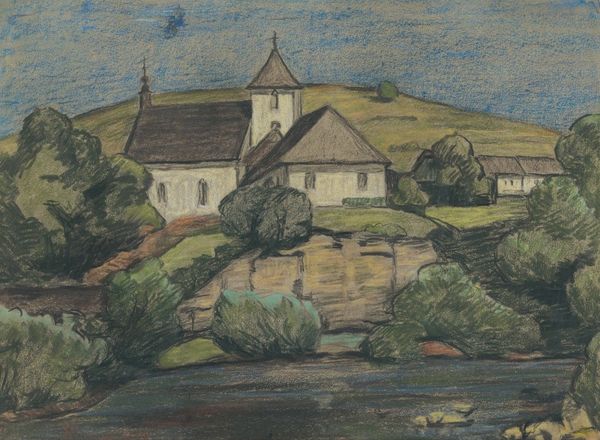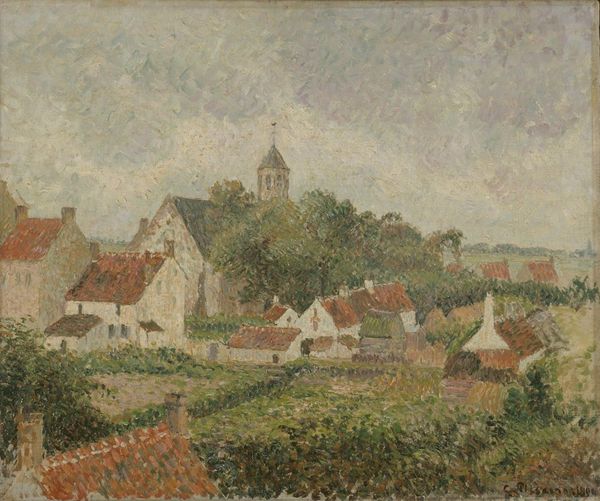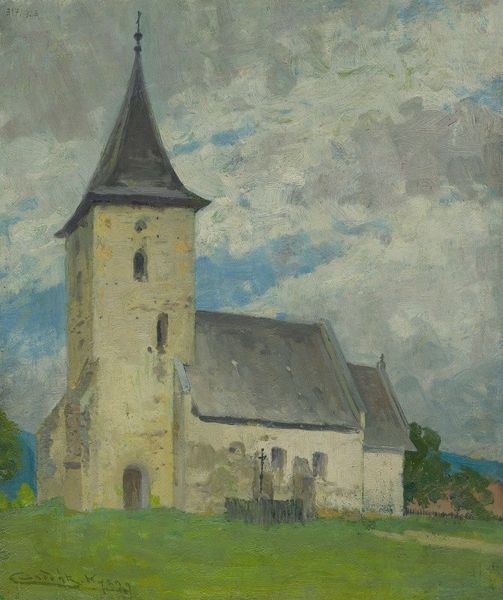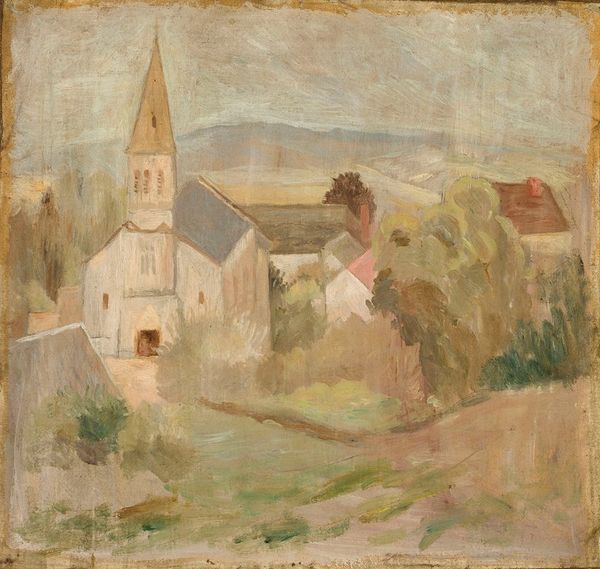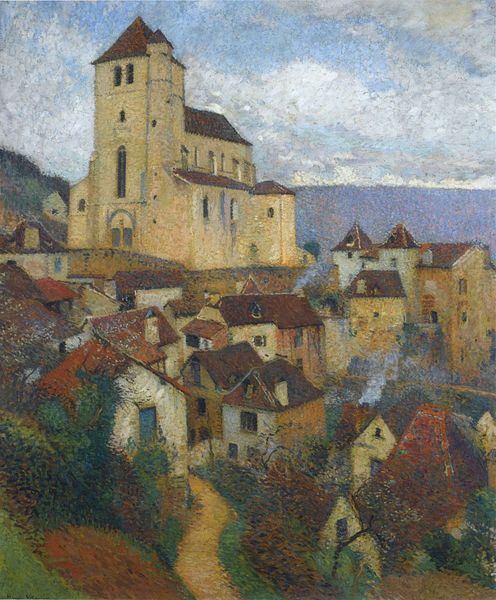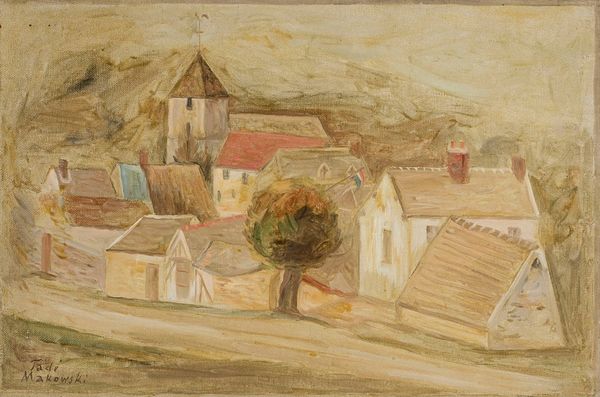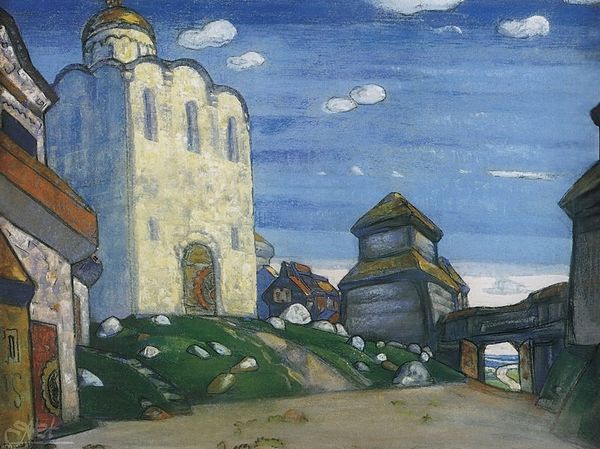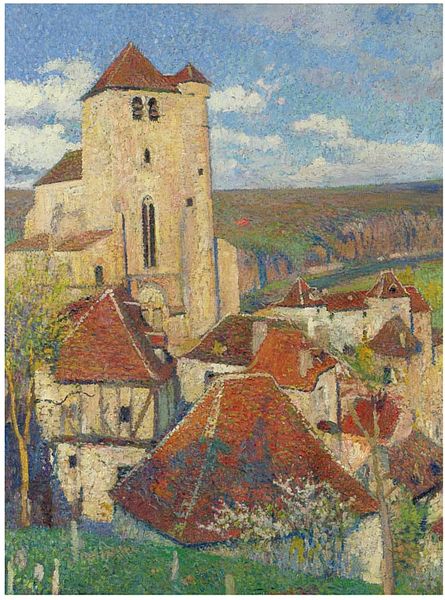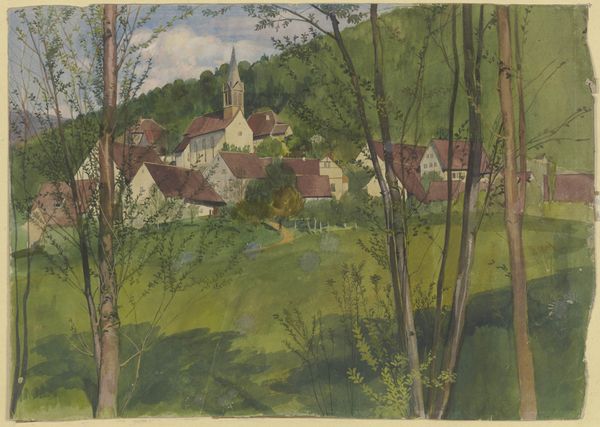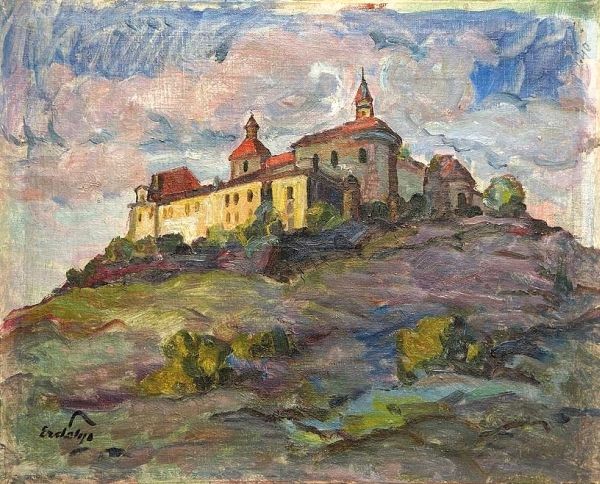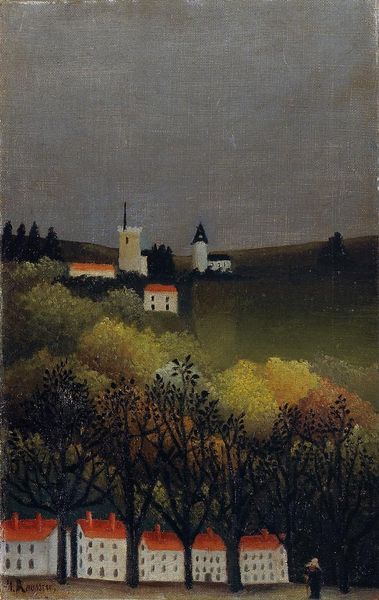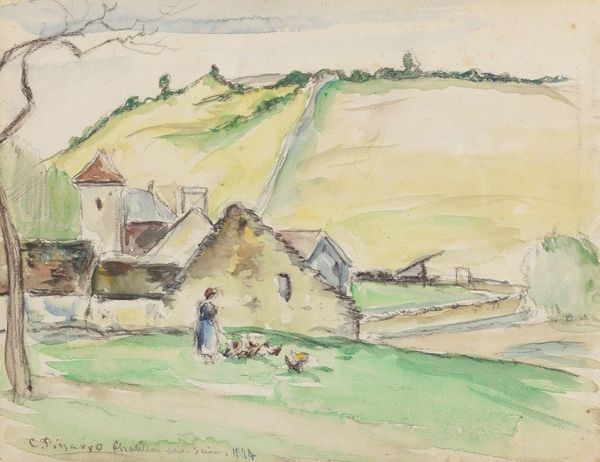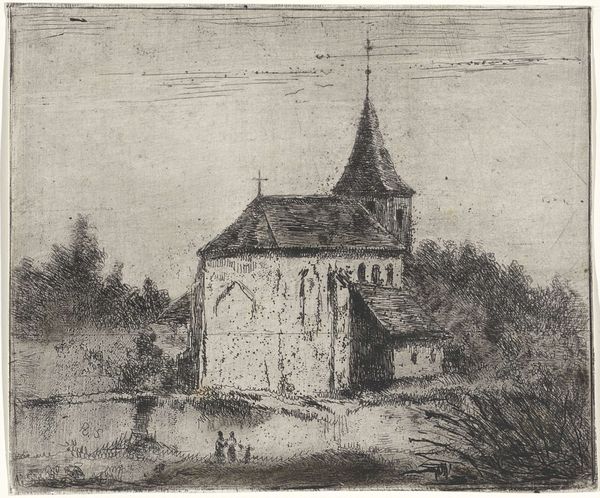
painting, watercolor
#
painting
#
landscape
#
oil painting
#
watercolor
#
coloured pencil
#
expressionism
Copyright: Public Domain: Artvee
Curator: Good morning. We're standing before Walther Gamerith's "Landschaft mit Kirche und Dorf," created around 1922. The work employs watercolor, colored pencil, and oil on paper. Editor: It feels…quiet. There's a subdued quality to the color palette that invites introspection. The muted greens and greys create a sense of stillness, don't you think? Curator: Absolutely. The application of the paint and the texture of the pencil strokes certainly reinforce this stillness, even within what is recognisably an Expressionist mode. There's a definite reduction of form to its essence. It is Expressionist in that the work is concerned less with visual realism, and more with the artist's feeling-state at the moment of production. Editor: Yes, and what I appreciate about the handling of the scene, viewed through this Expressionistic lens, is its historical situation. Remember that after the collapse of the Austro-Hungarian empire, rural life underwent drastic change and a certain decline, particularly with industrializing hubs exerting ever greater social pressure. Paintings like these helped create a shared sense of identity amidst a changing landscape. It allowed for the rural population to not only picture itself, but, I’d argue, re-imagine its importance within a drastically modernizing Austria. Curator: That is astute. It certainly adds layers of complexity, which you can view via the formal elements here, the contrast between the grounding earth tones and the sky, how one seems to pull at the other formally. The impasto of the village versus the smooth surface of the cloudy skies above it…It underscores the tension of modernizing forces at work, even as one could argue the church looms highest of all, mediating between earthly village and divine sky. Editor: Perhaps Gamerith hoped the painting would operate something like a portal, allowing modern city viewers an entry-point into an important sense of their quickly dissolving heritage and folk identity. In the way the church visually holds court, so too would heritage for Austria at the time. Curator: Fascinating points. Looking at it again with those factors in mind, I now see an intriguing ambiguity. Editor: Yes. A reminder, then, of art’s capacity to capture transient historical anxieties. Curator: And it presents a unique, if understated, contribution to the evolution of landscape painting.
Comments
No comments
Be the first to comment and join the conversation on the ultimate creative platform.
